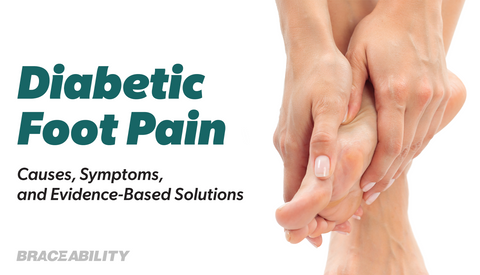What is Acute Pain And When to Take it Seriously
It can be a challenge to determine if your pain is serious and something that could need additional medical attention, or a completely manageable pain with a shorter timeline. Acute pain is often mistaken for chronic pain. Although annoying and painful, your pain is likely less serious when acute.
Now, this is not nearly enough information for you to feel confident in managing your acute pain, so continue on to understand the difference between chronic and acute pain, and when you should take it seriously.
Definition of Acute Pain
The term “acute pain” gets thrown around, but what does acute pain mean? Well, acute pain generally stems from an event like surgery, injury or childbirth. Most times, the pain sticks around for less than three to six months and goes away as the injured tissue heals.
Acute Pain Symptoms
Symptoms for acute pain can vary and the scale is large. If you are experiencing acute pain, you may describe the feeling as:
- Sharp
- Throbbing
- Burning
- Stabbing
- Tingling
- Weakness
- Numbness
Acute vs Chronic Pain
Acute pain is distinct from chronic pain and is relatively more sharp and severe. Chronic pain tends to hang around even after the wound is fully healed. Acute pain will occur quickly and go away when there is no longer a cause for the pain. The general rule of thumb is pain that occurs for longer than 6 months typically falls in the chronic category. Because chronic pain is more intense by nature, there is the chance of additional negative effects like anxiety, depression, limited mobility and sore muscles.
Chronic pain is often linked to conditions such as:
- Arthritis
- Cancer
- Headaches
- Nerve pain
- Fibromyalgia
What Are Examples of Acute Pain?
Acute pain can occur just about anywhere. As mentioned, acute pain arises from other events like a surgery or injury. A few examples of acute pain include:
- Knee pain
- Back pain
- Sprained ankle
- Muscle Strain
- Dental pain
- Stomach ache
- Postpartum pain
- Cuts or burns
- Muscle spasms
Acute Pain Scale
Acute pain is not always as cute as it sounds, it can be sharp and sudden, acting as a warning to your body that something is wrong or irregular. Many believe that acute pain means it is mild and easily treatable. And although it can be treatable, acute pain can be a fairly complex pain. Some pain is temporary and short-lived, other times it can be more severe and long-lasting.
Medical professionals like to use a Wong-Baker FACES pain rating scale (displayed below) where you select where your pain lies. This is the easiest way to let your doctor know what the pain feels like.

Treatments For Acute Pain
Acute pain symptoms can come and go which makes it difficult to treat the cause of pain. Sometimes, your doctor may try blood work, imaging (X-Ray, MRI, CT scan), nerve docution studies, or dye-injection studies to better understand your pain.
Common treatments for acute pain include:
- Rest
- Bracing the affected area
- Applying heat or ice
- Non-steroidal anti-inflammatory drugs (NSAIDs) such as aspirin, ibuprofen, or acetaminophen
- Physical therapy
- Exercise
- Bioelectric therapy
- Stress Reduction
- Trigger point treatment
- Acupuncture
In serious situations, your doctor may prescribe you pain medication. Speak with your doctor before trying any of the above treatments so you are sure not to make the pain or injury worse.
Braces for Acute Pain
Depending on where your acute pain is located, additional compression or support may be necessary for proper healing. With acute pain having the possibility to occur anywhere on your body, there is not one brace to support your pain, but lucky for you, we have a large array of supports to help ease your pain! Explore our brace collections for abdomen, ankles, knees, back, and more! If you are unsure if a brace would be beneficial for you, seek input from your doctor.
When To Take Acute Pain Seriously
Now that you understand the difference between chronic and acute, it’s important to know when to take your pain seriously. Pain is uncomfortable and not something you want to be living with for long. While acute pain can be shorter lived than chronic pain, there comes a time when additional medical attention may be necessary. As mentioned previously, there are some emotional symptoms that can come with pain. Anxiety, depression, insomnia etc. are all examples of emotional experiences that may occur. If you fall into this category, seek help from your doctor.
On a physical level, when acute pain lasts longer than expected, it can become chronic pain. If the burn on your hand or sprained ankle sticks around longer than expected, it would be wise to seek advice from a medical professional to avoid the chance of anything more serious. If your primary care specialist cannot treat or diagnose your situation, ask whether a referral to a pain specialist would be appropriate.











